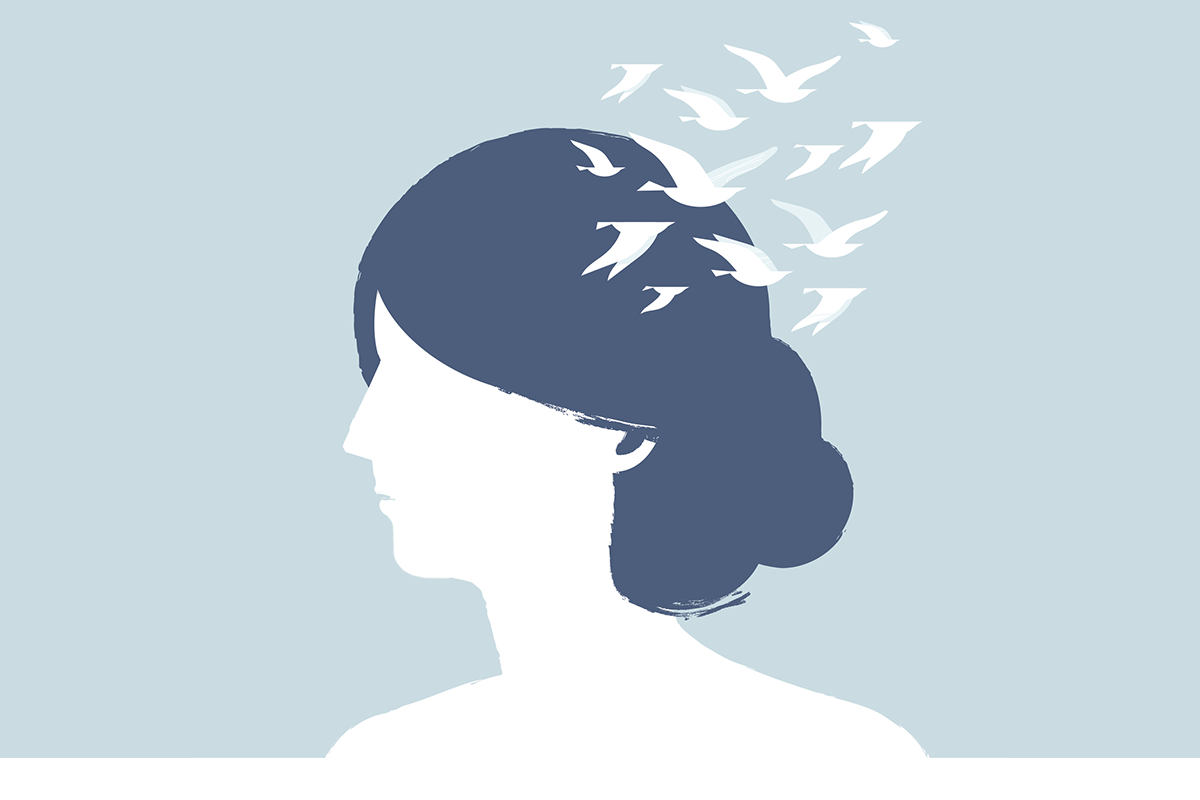We welcome Diploma Programme (DP) graduate Ruth Holt of Dartford Grammar School for Girls to reflect on the concept of, “knowing”, through her experience of becoming a first-time mom. This is her first story in the graduate voices series.

When my husband and I had an offer accepted on a house in a London suburb, my mother was elated. Not because the new house was walking distance from hers or that we had completed the move before our baby (her first grandchild) was due. But because the house sported the holy-grail of both loft space and eaves storage: a long passageway that runs the length of the house, neatly tucked away behind a door in one of the bedrooms.
“I can have my loft back!” She’d squeal, every time the topic of the new house came up in conversation. Or even when it didn’t, for that matter.
You see, although I’d moved out of my childhood home, I didn’t exactly take all my stuff with me. Note the word, ‘stuff’―I had no clue what exactly was left there, so there isn’t a better description of it. I had the valid excuse that there was no space in any of our previous homes to transfer the treasure trove of lifetime memories, *cough* hoarding *cough* from my parents’ home to mine.
On moving day, seconds after waving the moving van goodbye, my mother’s car whipped onto the new driveway and she started to unload a childhood’s worth of toys, art projects, school books and university essays. I suspect she was waiting outside with the engine running, ready to pull this manoeuvre off.
“Since you’re pregnant, I didn’t want you going up in my loft … so I brought it all to you!”
Great.
A major sort-out was needed. Accountancy books could go: work keeps up-to-date copies of everything. The dolls’ house would stay. Then there was the box of IB folders and at the bottom of one was an early draft of a theory of knowledge (TOK) essay, littered with corrections and teacher’s comments.
I hadn’t given much thought to the subject since leaving school. Don’t get me wrong, the Friday morning debates we had during TOK lessons were always emotive and a few still stick in my mind. Yet in everyday life outside of academia, there isn’t much time for pondering, ‘how we know what we know’, in between going to work, hitting the gym and navigating the London transport network (pre-COVID-19, of course). Stumbling across the draft TOK essay made for a bit of reminiscing but it also came at an opportune moment.
My pregnancy at the time was not going to plan. In fact, it was going so off-course that it was more like a practical version of something that we might have debated in a TOK lesson. Prenatal screening, otherwise known as the combined test, showed that my baby would have a likely chance of Down syndrome. From intensive Googling sessions, I read about plenty of parents who received high-chance odds from this test, from ‘1 in 4’ all the way to a ‘1 in 150’ chance of having a child with an extra chromosome. As a clear overachiever right from the start; my little one received a result of greater than a ‘1 in 2’ chance of Down syndrome. A second screening test (Non-Invasive Prenatal Testing: NIPT) would change that to greater than 99% chance.
“There was a lot that I could learn about Down syndrome and everything associated with it but until I met my little girl, I didn’t know much.”
The results were overwhelming. As a self-confessed over-prepper, it can be difficult to handle an unexpected change of plan, more so when your child is concerned. The hospital dutifully offered counselling and further testing so that we could, ‘know’, for certain whether there really was an extra chromosome.
The further testing comes in the form of a procedure called amniocentesis: a large needle that is inserted into the abdomen to extract a sample of amniotic fluid to determine with certainty whether a pregnancy has a chromosomal abnormality. While the procedure is far more accurate than the combined test or NIPT, it comes with risks attached and so it was not something I wanted. Anyway, with the odds from the other tests it seemed fairly certain that my baby would be sporting an extra chromie.
What took me by surprise was that the medical professionals we came into contact with continued to offer this further testing. There was this need to, ‘know’, whether the baby definitely had Down syndrome and to make sure that we had been given all of our options, in terms of care pathways. While I am grateful for the prudent approach taken by these professionals, it seemed strange that we continued to be asked whether we wanted this. After all, a diagnosis of Down syndrome doesn’t actually tell you much.
Down syndrome, simply put, is having an additional chromosome and some degree of a learning disability. Practically everything else that you might associate with Down syndrome is what is known as an associated trait or condition. For example, babies with Down syndrome may have low muscle tone at birth, however, it is not definite that this would be the case.
Somehow, it came back to the notion from TOK of, ‘how do we know what we know?’ There was a lot that I could learn about Down syndrome and everything associated with it but until I met my little girl, I didn’t know much. I could no more predict if she would have a love of dinosaurs than whether she would require round-the-clock care for the rest of her life. Interestingly, even with amniocentesis results, the medical professionals responsible for our care were in a similar position.
As my husband and I prepared for the inevitable arrival of our daughter, it became apparent the whole raft of extra care that she would initially require. Thanks to a super-rare congenital heart defect that was discovered by the fetal-cardiac doctors, preparations were made well in advance to ensure she would be in the best place to ensure the right outcome (her survival). I questioned doctors for hours over what the outcome was likely to be but no one wanted to give a firm answer. Truth was, there were so many factors at play that no one really knew if she was going to survive. It was a case of hope for the best but prepare for the worst.
“Getting worried about the future doesn’t change anything but it does get in my way of having clear head and being able to handle today’s problems”
When Amelia arrived, donning her extra chromosome and screaming as loud as her heart and lungs would allow; the gaggle of medical staff in labour room breathed a collective sigh of relief. She was cleaned up, passed around for brief cuddles before being whisked off to Intensive Care for observation. The resuscitation bay that was brought specially into the room ready for her birth sat unused.
She scooted through the Intensive Care Unit, then the High Dependency Unit before being transferred to our local Special Care Baby Unit: all in two weeks, total. It was so quick, that at one point the nurses didn’t have time to tell me that Amelia had been downgraded into a different ward. Unfortunately, this was at 3am when I wandered bleary-eyed from my ward to hers for a night-time feed, only to find she was no longer where I left her! To say I was panicked would be a gross understatement.
When Amelia came home, it was without any medication or even a feeding tube. I found it hard to see much of a difference between her and the other babies at the mum & baby classes we enrolled in: in the early days most babies are either sleeping or feeding anyway.
Even now, Amelia is my first child, so I don’t have many comparisons to know whether she is doing things as a typical child would. She has taken a liking to football and will happily pass one back and forth. All of Amelia’s football-obsessed family members have come forward, determined to get her supporting their team and so she has no shortage of replica kits to wear. Even more than football, Amelia adores music and dance. When she hears music, she will drop whatever is in her chubby-baby hands to clap and wiggle in perfect time to the beat. If I play the radio in the car, she dances in her car seat until she falls asleep. What a life!
There is the temptation to get concerned about what comes next for Amelia. What school will be right for her? What kind of additional support might she need? The reality is, I, ‘know’, no more now about the future today than I did back when I was pregnant. Getting worried about the future doesn’t change anything but it does get in my way of having clear head and being able to handle today’s problems (namely, how to remove porridge from the wallpaper in the dining room).
Truth be told, I’m quite excited for what the future holds for my little dance partner.

Ruth Holt is an ICAEW Chartered Accountant and works in the banking industry. She holds a degree from Cardiff University in English Literature (BA (Hons)) and completed the IB programme at Dartford Grammar School for Girls in 2006. Ruth is a mum to larger-than-life one-year-old, with whom she is learning Makaton. You can connect with her on LinkedIn here.
To hear more from Diploma Programme (DP) graduates check out these IB programme stories. If you are an IB grad and want to share your story, write to us at alumni.relations@ibo.org. We appreciate your support in sharing IB stories and invite you to connect with us on LinkedIn, Twitter and now Instagram!
If you enjoyed this story, consider reading more below:



